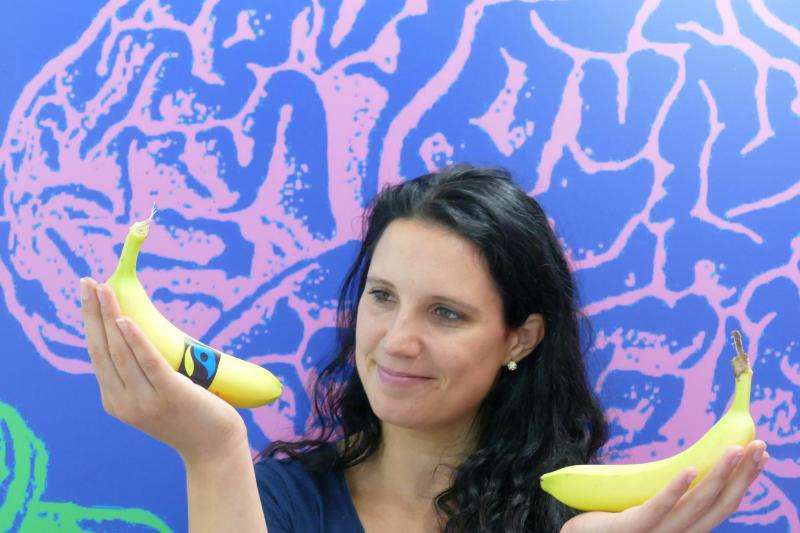Study finds Fair Trade logo boosts consumer's willingness to pay

Products labeled with a Fair Trade logo cause prospective buyers to dig deeper into their pockets. In an experiment conducted at the University of Bonn, participants were willing to pay on average 30 percent more for ethically produced goods, compared to their conventionally produced counterparts. The neuroscientists analyzed the neural pathways involved in processing products with a Fair Trade emblem. They identified a potential mechanism that explains why Fair Trade products are evaluated more positively. For instance, activity in the brain's reward center increases and thereby alters willingness to pay computations. The study results have now been published in the journal Frontiers in Behavioral Neuroscience.
A blue-green circle around a stylized figure in black with a raised arm: Since its launch in 2003, the Fair Trade logo has hardly changed. Currently, it is found on a great variety of products, including coffee, bananas, creams, wine bottles and even soccer balls. Critically, the emblem influences subjective evaluations of products, as researchers at the Center for Economics and Neuroscience at the University of Bonn demonstrated in their latest study: While test subjects lay in a brain scanner, they bid on various food products. Each of these products was available in two versions – Fair Trade or conventionally produced. The results were clear: On average, participants were willing to pay around 30 percent more for products produced according to Fair Trade standards, compared to their conventionally produced counterparts.
Logo activates brain's reward system
As the study was conducted in a brain scanner at the LIFE&BRAIN Center in Bonn, researchers could also show that products labeled with this emblem led to increased activity in specific brain regions: For example, they observed increased activation in regions important for reward processing as well as frontal regions that process abstract product attributes (e.g. whether or not a product carries a Fair Trade logo, and the meaning of such a label).
Part of the frontal lobe ultimately calculates the willingness to pay in an area known as the ventromedial prefrontal cortex, (vmPFC), which refers to the area's location. "The higher the activity in the vmPFC, the more money subjects were willing to pay," explains Prof. Dr. Bernd Weber, neuroscientist at the University of Bonn. The scanner data suggests that the vmPFC integrates information from other brain areas and uses this information to calculate an overall value. Based on information from various regions, it reaches a decision: Would I pay 50 cents for the Fair Frade banana? Or just 30 cents?
Fair Trade products taste better
The Fair Trade logo leads to even more widespread effects: the food labeled with Fair Trade logos also tasted better. In a second experiment, participants sampled two pieces of chocolate, declared as coming from either Fair Trade or conventional production. Participants then rated the product's palatability. The piece of chocolate labeled with a Fair Trade emblem received superior taste evaluations.
"Pure imagination," says the study's lead author Laura Enax. "Both pieces of chocolate are actually identical."
More information: "Effects of social sustainability signals on neural valuation signals and taste-experience of food products"; Frontiers in Behavioral Neuroscience; DOI: 10.3389/fnbeh.2015.00247
Provided by University of Bonn



















